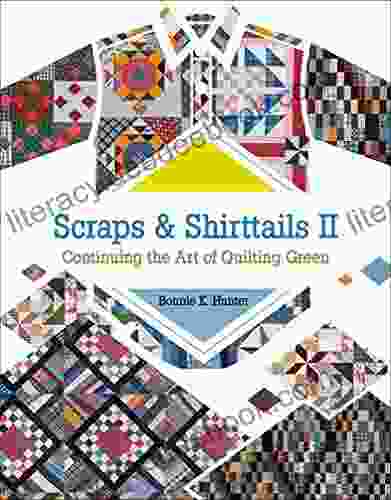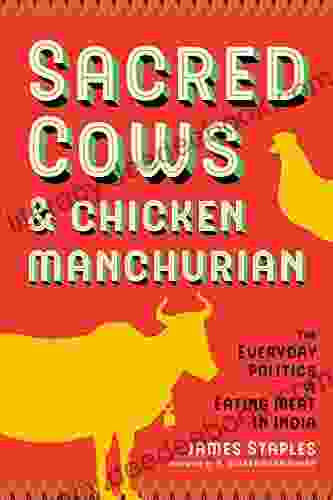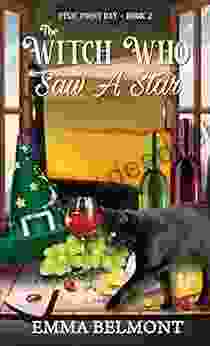Continuing the Art of Quilting Green: A Comprehensive Guide to Sustainable Quilting

Quilting is a beloved art form that has been passed down through generations. However, traditional quilting practices often rely on materials and processes that are not environmentally friendly. As concerns about climate change and sustainability grow, many quilters are seeking ways to reduce their environmental impact while continuing to enjoy their craft.
4.7 out of 5
| Language | : | English |
| File size | : | 57658 KB |
| Text-to-Speech | : | Enabled |
| Screen Reader | : | Supported |
| Enhanced typesetting | : | Enabled |
| Print length | : | 208 pages |
| Lending | : | Enabled |
This comprehensive guide will introduce you to the art of green quilting, a sustainable approach to quilting that focuses on using eco-friendly materials and processes. We will explore a wide range of topics, including:
- Choosing sustainable fabrics
- Using natural dyes
- Incorporating recycled materials
- Reducing waste and conserving resources
Whether you are a seasoned quilter or a beginner looking to make a difference, this guide will provide you with the knowledge and inspiration you need to create beautiful, sustainable quilts.
Chapter 1: Choosing Sustainable Fabrics
The first step in green quilting is choosing sustainable fabrics. Here are some options to consider:
- Organic cotton: Organic cotton is grown without the use of pesticides and fertilizers, which helps to protect soil and water quality.
- Recycled cotton: Recycled cotton is made from discarded cotton garments and other materials, which reduces waste and conserves resources.
- Hemp: Hemp is a durable, sustainable fiber that is naturally resistant to pests and diseases.
- Bamboo: Bamboo is a rapidly renewable resource that is soft and silky to the touch.
- Soy: Soy fabric is made from the fibers of soybeans, and it is a biodegradable and sustainable option.
When choosing fabrics, also consider the following factors:
- Colorfastness: Choose fabrics that will not bleed or fade over time, especially if you plan to use natural dyes.
- Texture: Consider the texture of the fabric and how it will complement the other fabrics in your quilt.
- Weight: Choose fabrics that are appropriate for the weight of your quilt. Heavier fabrics are more suitable for quilts that will be used in the winter, while lighter fabrics are better for quilts that will be used in the summer.
Chapter 2: Using Natural Dyes
Natural dyes are a great way to add color to your quilts while reducing your environmental impact. Here are some popular natural dyes and the materials you need to use them:
- Indigo: Indigo is a blue dye that is made from the leaves of the indigo plant. To use indigo, you will need to create an indigo vat. Indigo is best used on natural fibers such as cotton and linen.
- Madder: Madder is a red dye that is made from the roots of the madder plant. To use madder, you will need to create a madder bath. Madder can be used on both natural and synthetic fibers.
- Cochineal: Cochineal is a red dye that is made from the dried bodies of cochineal insects. To use cochineal, you will need to create a cochineal bath. Cochineal can be used on both natural and synthetic fibers.
- Logwood: Logwood is a black dye that is made from the heartwood of the logwood tree. To use logwood, you will need to create a logwood bath. Logwood can be used on both natural and synthetic fibers.
- Walnut: Walnut is a brown dye that is made from the hulls of walnuts. To use walnut, you will need to create a walnut bath. Walnut can be used on both natural and synthetic fibers.
When using natural dyes, it is important to test the dyes on a small piece of fabric before using them on your quilt. This will help you to ensure that the colors are what you expect and that the dyes do not damage your fabric.
Chapter 3: Incorporating Recycled Materials
Incorporating recycled materials into your quilts is a great way to reduce waste and create unique, one-of-a-kind pieces. Here are some ideas for using recycled materials in your quilts:
- Use old clothes: Old clothes can be cut up and used as fabric for your quilts. Denim, flannel, and other durable fabrics work well for this purpose.
- Use recycled paper: Recycled paper can be used to create unique and beautiful quilt blocks. You can use old magazines, newspapers, or even junk mail.
- Use recycled plastic bags: Recycled plastic bags can be cut up and used as batting for your quilts. This is a great way to reduce waste and keep plastic bags out of landfills.
- Use recycled cardboard: Recycled cardboard can be used to create quilt backings or as a base for quilted wall hangings.
When using recycled materials, it is important to clean them thoroughly before using them in your quilts. This will help to prevent dirt, dust, and other contaminants from getting into your quilts.
Chapter 4: Reducing Waste and Conserving Resources
In addition to choosing sustainable fabrics and using recycled materials, there are other ways to reduce waste and conserve resources when quilting. Here are some tips:
- Plan your quilts carefully: Before you start cutting fabric, take the time to plan your quilts carefully. This will help you to minimize waste and ensure that you have enough fabric to complete your project.
- Use scraps wisely: When you cut fabric, try to use the scraps in other parts of your quilt. This will help you to reduce waste and create a more cohesive look.
- Donate unused fabric: If you have any unused fabric, donate it to a local charity or quilt guild. This will help to ensure that the fabric is used and not wasted.
- Conserve water and energy: When washing and drying your quilts, be sure to use cold water and low heat settings. This will help to conserve water and energy.
- Recycle your quilt scraps: If you have any quilt scraps that you cannot use, recycle them. Many fabric stores and recycling centers accept fabric scraps.
Green quilting is a sustainable and rewarding way to continue the art of quilting. By choosing sustainable fabrics, using natural dyes, incorporating recycled materials, and reducing waste, you can create beautiful quilts that honor the environment. We hope that this guide has inspired you to explore green quilting and to make a difference in the world.
4.7 out of 5
| Language | : | English |
| File size | : | 57658 KB |
| Text-to-Speech | : | Enabled |
| Screen Reader | : | Supported |
| Enhanced typesetting | : | Enabled |
| Print length | : | 208 pages |
| Lending | : | Enabled |
Do you want to contribute by writing guest posts on this blog?
Please contact us and send us a resume of previous articles that you have written.
 Page
Page Genre
Genre Reader
Reader Paperback
Paperback Magazine
Magazine Newspaper
Newspaper Paragraph
Paragraph Bibliography
Bibliography Foreword
Foreword Preface
Preface Synopsis
Synopsis Annotation
Annotation Footnote
Footnote Scroll
Scroll Tome
Tome Bestseller
Bestseller Classics
Classics Library card
Library card Narrative
Narrative Biography
Biography Autobiography
Autobiography Memoir
Memoir Reference
Reference Encyclopedia
Encyclopedia Thesaurus
Thesaurus Narrator
Narrator Character
Character Resolution
Resolution Archives
Archives Periodicals
Periodicals Lending
Lending Academic
Academic Journals
Journals Rare Books
Rare Books Special Collections
Special Collections Interlibrary
Interlibrary Thesis
Thesis Awards
Awards Reading List
Reading List Book Club
Book Club Edward P Jones
Edward P Jones Sophie Claire
Sophie Claire Iain Lawrence
Iain Lawrence Ralph G Giordano
Ralph G Giordano C M Greathouse
C M Greathouse Harjinder Singh
Harjinder Singh Rita Weiss
Rita Weiss J Washburn
J Washburn Dennis Roberts
Dennis Roberts K D Miller
K D Miller Stan Sclaroff
Stan Sclaroff Markus Maeder
Markus Maeder D H Lawrence
D H Lawrence Gareth Conner
Gareth Conner Polly Pallister Wilkins
Polly Pallister Wilkins Eric Compton
Eric Compton Courtney Carbone
Courtney Carbone Perrine Toledano
Perrine Toledano Helen Prejean
Helen Prejean A L Smith
A L Smith
Light bulbAdvertise smarter! Our strategic ad space ensures maximum exposure. Reserve your spot today!

 Frank ButlerPractical Way To Navigate Through Project Storm For Cios And Other Executives
Frank ButlerPractical Way To Navigate Through Project Storm For Cios And Other Executives Gabriel MistralFollow ·12k
Gabriel MistralFollow ·12k Nathaniel PowellFollow ·18.5k
Nathaniel PowellFollow ·18.5k Casey BellFollow ·2k
Casey BellFollow ·2k Ben HayesFollow ·7.4k
Ben HayesFollow ·7.4k Dave SimmonsFollow ·5.8k
Dave SimmonsFollow ·5.8k Charles ReedFollow ·14.8k
Charles ReedFollow ·14.8k Duncan CoxFollow ·4.9k
Duncan CoxFollow ·4.9k Truman CapoteFollow ·11.3k
Truman CapoteFollow ·11.3k

 Al Foster
Al FosterHow To Breathe Underwater: Unlocking the Secrets of...
: Embracing the...
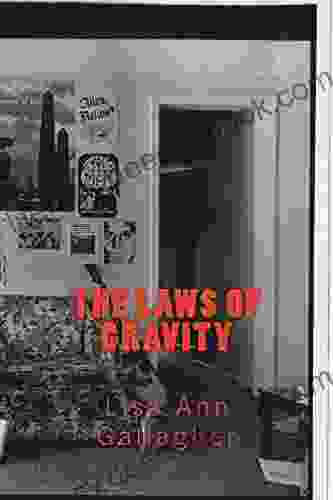
 Ian Mitchell
Ian MitchellThe Laws of Gravity: A Literary Journey into the...
Lisa Ann Gallagher's...
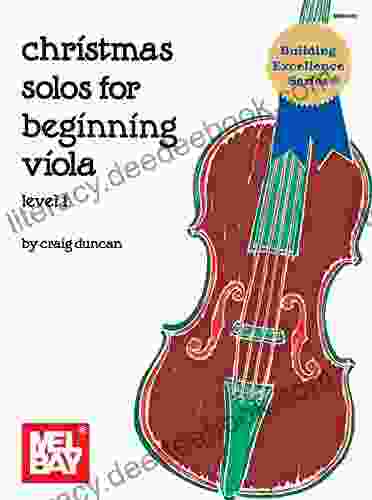
 Francis Turner
Francis TurnerChristmas Solos For Beginning Viola: A Detailed Guide for...
Christmas is a time for...

 Jamal Blair
Jamal BlairDefine Humanistic Psychology Forms Of Communication...
Humanistic...

 Morris Carter
Morris CarterJudgment in Berlin: Unraveling the Intrigue of an...
"Judgment in Berlin" is a gripping...
4.7 out of 5
| Language | : | English |
| File size | : | 57658 KB |
| Text-to-Speech | : | Enabled |
| Screen Reader | : | Supported |
| Enhanced typesetting | : | Enabled |
| Print length | : | 208 pages |
| Lending | : | Enabled |


